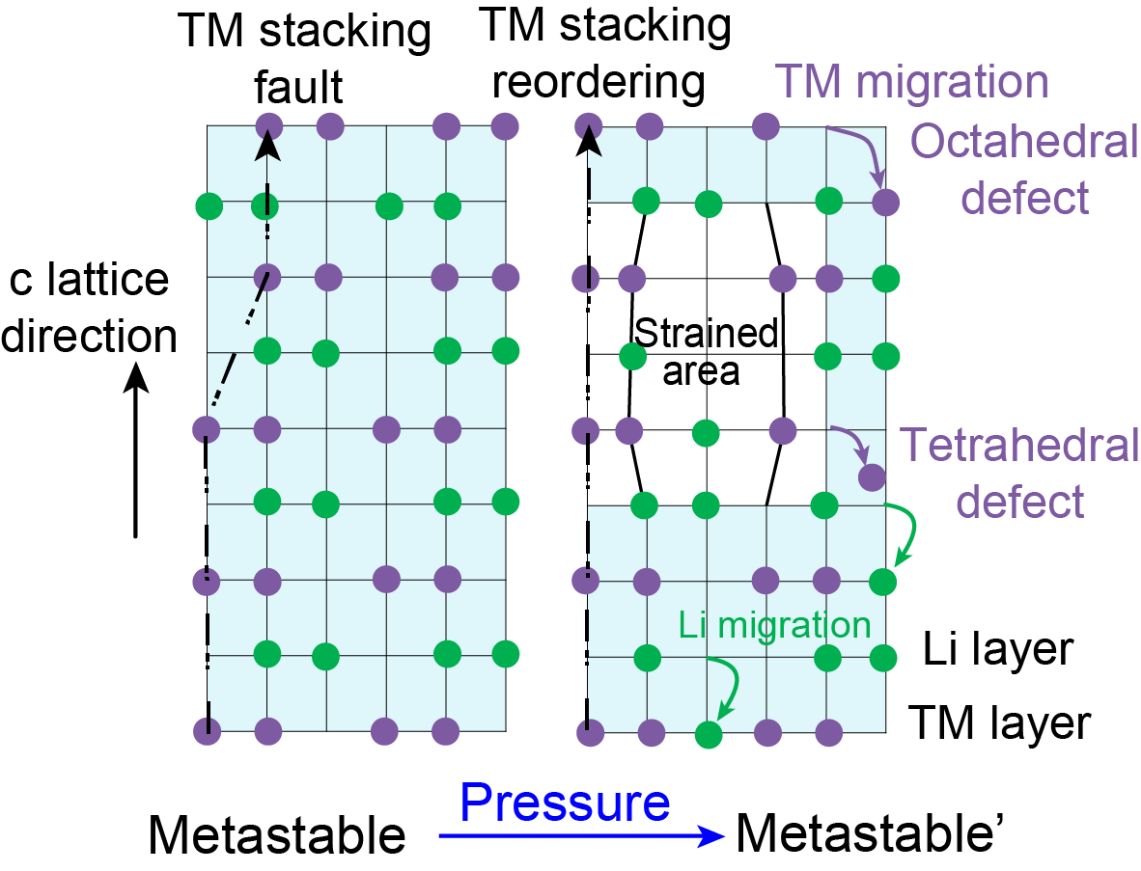A research group led by Prof. LIU Zhaoping at the Ningbo Institute of Materials Technology and Engineering (NIMTE) of the Chinese Academy of Sciences (CAS), revealed the structural flexibility and metastability of anionic redox-based lithium transition metal oxides, which can undergo large compressions and structural modifications while delivering good electrochemical properties under high pressure treatment, in cooperation with researchers at the University of California, San Diego, and other institutions. The study was published in Matter.
In recent decades, rechargeable lithium ion batteries (LIBs) have commercially dominated the portable electronics market, and gradually evolved into the most encouraging market areas for electric vehicles.
The richness of anionic redox chemistry in the solid state offers new inspiration for energy storage research. In addition, as the cornerstone for energy storage through Li intercalation, the lithium transition metal oxide exhibits many physical properties, including magnetism, piezoelectricity, and superconductivity.
Structural evolution plays a critical role in determining the intercalation reversibility of lithium, thus influencing its electrochemical properties. Through high-pressure treatment, the researchers induced the structural and electrochemical modifications of anionic redox-based lithium rich layered oxides.
After anionic redox activation, these materials transform to metastable states. During operando pressure sweep, a unique cyclical change of structural reordering is observed in the anionic redox-activated material. Meanwhile, the bulk compressibility of the material became negative, which is a highly attractive mechanical property for the devices applied in high pressure environments and ultrasensitive pressure detectors. Moreover, lithium migration between Li and transition-metal layer is reversible.
Through combined synchrotron X-ray diffraction (SXRD), transmission electron microscope (TEM), and first principles calculations, the study pinpoints the critical influence of high pressure on the structural and electrochemical modifications of anionic redox-based lithium-rich layered oxides. Furthermore, the unique metastability of the anionic redox-based oxide material can shed light on the further research of other unusual properties, like negative thermal expansion, negative Poisson's ratio, etc.
This work was financially supported by the National Key Research and Development Program of China (No. 2016YFB0100100), National Natural Science Foundation of China (No. 21703271 and 21773279), and Key Projects on “Science & Technology Innovation 2025” in Ningbo (No. 2018B10081), etc.

Fig. Schematic illustration of the structure evolution under high pressure treatment (Image by NIMTE)
Contact
QIU Bao
Ningbo Institute of Materials Technology and Engineering
E-mail: qiubao@nimte.ac.cn

